There are so many myths around mineral or physical sunscreens – the ones with zinc oxide and titanium dioxide – and how they’re supposedly better than chemical sunscreens with scarier names like oxybenzone and octocrylene. And it’s usually zinc oxide that gets all the hype.
Some of these advantages are true… but so many are just myths. And a lot of these myths are being spread not only by social media, but also the regular media, sunscreen brands, doctors, dermatologists, cosmetic chemists, scientists – and I think these myths are getting people to use sunscreens that aren’t actually the best option for them.
I’ve talked about the pros and cons of chemical and physical sunscreens before, including issues like safety, irritation, environmental impact. But this post is going to focus on the myths around zinc oxide sunscreens giving better protection – that they’re actually better performing sunscreens.
(I was originally going to cover the other aspects as well, but it ended up too long, so that’s future Michelle’s problem. I’ve also probably missed a few myths so if you think of any more leave them in the comments.)
The video is here on YouTube – keep scrolling for the text version.
First off, I have nothing against people using zinc oxide sunscreens. If you prefer them, then keep using them! I just want everyone to know what the real benefits and drawbacks are, so you can make the best decision for your own situation.
I’m going to be calling the two types of sunscreen ingredients “chemical” and “physical” or “mineral”. It’s not great terminology and it kills me a bit inside every time – organic and inorganic are more accurate – but it’s what everyone calls them, so I’m just going to be a sheep (an SEO-aware sheep). Zinc oxide and titanium dioxide are the physical sunscreens, everything else is chemical.
Related post: Chemical vs Physical Sunscreens: The Science (with video)
So: zinc oxide being the most effective sunscreen. The most common reason I’ve seen is:
How they work
“Because zinc oxide sunscreens reflect and scatter UV like a shield, while chemical sunscreens absorb UV like a sponge”
This is probably the most widespread myth about mineral sunscreen, but it isn’t true. Just like chemical sunscreens, mineral sunscreens mostly work by absorbing UV and turning it into a tiny amount of heat. About 95% of the UV that mineral sunscreens block gets absorbed and converted to heat, with about 5% contribution from back-scattering or reflecting (the nitty gritty of how different sunscreen ingredients work is explained here).
Related post: How Do Sunscreens Work? The Science (with video)
I’m not sure why scattering and reflection is used as a reason for why mineral sunscreens are better. I think it mostly just comes down to how absorbing sounds like it doesn’t protect you as much as a superhero shield that bounces the UV away, like there’s some UV that can still hang around and hurt you.
I think there’s also confusion with the word “absorb” – it sounds like chemical sunscreens absorb deeper into skin so they don’t protect the upper layers, which is also a myth. But it doesn’t matter: almost all of the UV is absorbed by mineral sunscreens, and the final ~5% is scattered.
Now some people might cling onto that scattered 5% and still say zinc oxide is still better. But scattering isn’t as good as it sounds – most of the UV that gets scattered is actually scattered forwards, deeper towards your skin.
This isn’t really a problem because it increases the chances of it hitting another sunscreen particle and getting absorbed and transformed into heat. But basically, absorption’s fantastic, because it actually destroys the UV and turns it into something less harmful, while scattering is like deflecting a bullet.
So this myth birthed another myth – maybe we can make like a sunscreen myth family tree (a cursed family tree)…
How much heat is produced
“Mineral sunscreens are better because they don’t produce as much heat.”
I’ve already said there’s only about 5% difference in heat, which is tiny. But Zinc Loyalists™ might say that this might be enough to make a difference and could contribute to pigment and melasma.
I actually did a test with a thermal camera and some sunscreens – it turns out that the difference in temperature between chemical and physical sunscreens is smaller than the temperature difference between your elbow .and your arm. So, no.
Related post: Do We Need to Worry About Heat From Sunscreens? (with video)
Breadth of protection
“Mineral sunscreens (especially zinc oxide) are broader spectrum and protect against all wavelengths unlike chemical sunscreens.”
Again, this is probably like a cousin of the shield thing, but it’s partially true.
Zinc oxide is a broader spectrum ingredient, protecting against UVB, UVA1 and UVA2 wavelengths – but not because it works like a shield. Titanium dioxide is also a mineral sunscreen, but it isn’t very good at protecting against the longer waves of UVA1, unless it starts going white. And there are chemical sunscreens that can protect against all three regions of UV as well.
But I guess it boils down to: does a broad spectrum sunscreen ingredient give a more protective sunscreen? Well, no. Broad spectrum just talks about the breadth of the protection, not the strength of the protection, and that’s where zinc oxide really falls short.
Sunscreen protection is a bit like a wall. Zinc oxide is a very wide wall with a lot of breadth, so it protects against lots of different wavelengths. But it’s not a very protective, strong wall. It’s a bit like a slice of Swiss cheese (specifically Emmental, for you cheese nerds).
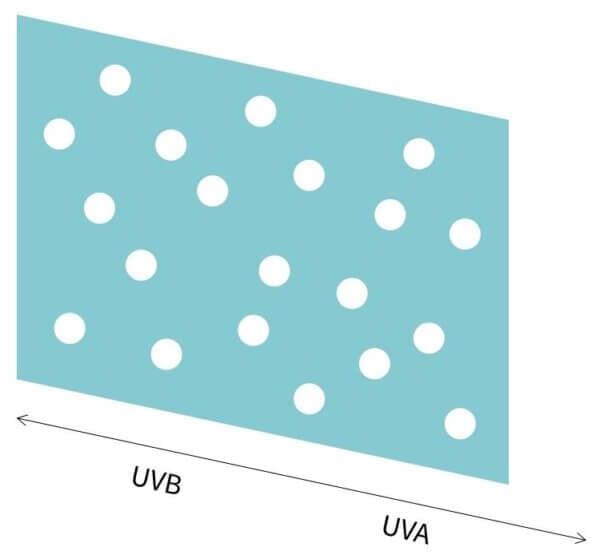
There are lots of gaps in the protection, so if you just have one layer of this holey wall, you block UV coming in all along the wall (you can imagine UV like balls getting thrown at the wall), but a lot of the UV still gets through.
Chemical sunscreen ingredients are usually like narrower walls, without a lot of breadth. But they tend to be stronger and less holey. That means that they protect a smaller section, but they protect that section better.
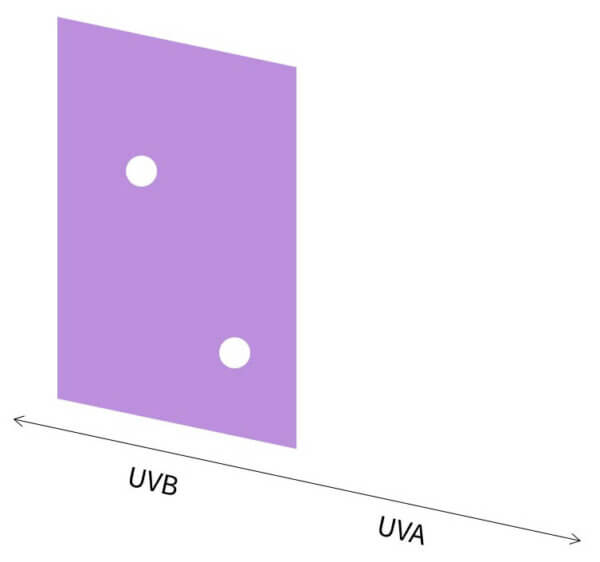
So right now it seems like both aren’t great. But we can improve both of these options:
We can stack more zinc oxide walls together, so you end up with more protection all along the wall. This is the equivalent of putting more zinc oxide into the sunscreen.
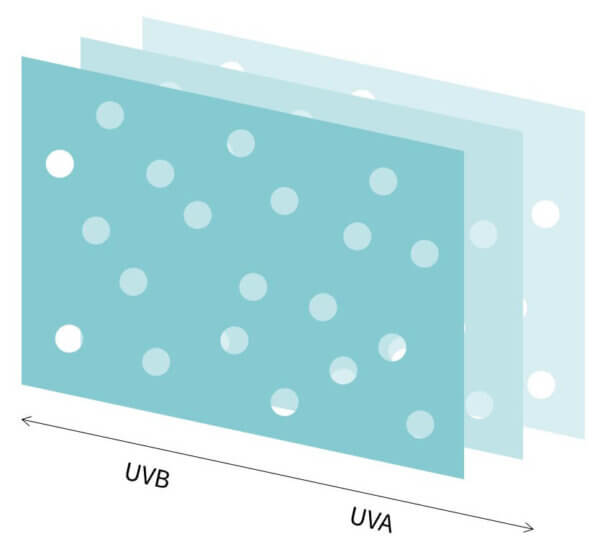
Different chemical sunscreens protect different parts along the UV spectrum, so we can put up more walls in different places. This is the equivalent of mixing different chemical sunscreen ingredients in the one sunscreen.
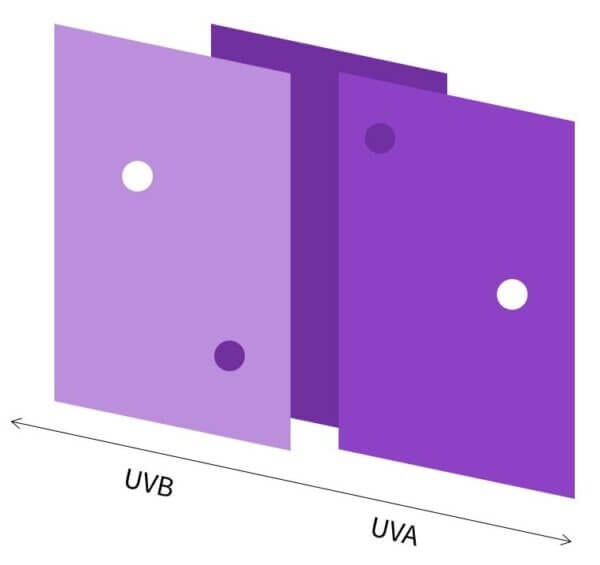
Now, the problem is, we can’t just jam an infinite amount of zinc oxide into a sunscreen. We need other things in the sunscreen to make it spread, keep it on the skin, stop it from looking and feeling too much like chalk. Chemical sunscreens are soluble, so they feel a lot nicer than zinc oxide. They’re also a lot more efficient than zinc oxide, so it turns out that mixing different chemical sunscreens gives us higher protection than we can get with a zinc oxide-only sunscreen.
There’s been some new developments in zinc oxide technology, where essentially you can use different shapes of zinc oxide particles that absorb UV better. But still, with zinc oxide alone, you can only usually get about SPF 60 and UVAPF 20 before it turns into white chalk paste, but chemical sunscreens can go up to SPF 100+ and UVAPFs of over 60 (in regions where those ratings are allowed, anyway).
If you look at the highest SPF rated sunscreens, they don’t have zinc oxide, but rather a combination of chemical sunscreens and titanium dioxide, or chemical filters only:
- Rilastil MD 100+ Fluid: Octocrylene, Titanium Dioxide (Nano), Avobenzone, Bemotrizinol (BEMT)
- Neutrogena Ultra Sheer Dry Touch Sunscreen SPF 100+: Avobenzone, Homosalate, Octisalate, Octocrylene, Oxybenzone
- Eucerin Actinic Control MD SPF 100: Avobenzone, Octisalate, Bemotrizinol (BEMT), DHHB, Octyl Triazone, Homosalate, PBSA, Titanium Dioxide
- La Roche-Posay Anthelios Melt-In Milk SPF 100: Avobenzone, Homosalate, Octisalate, Octocrylene
- Bioderma Photoderm Max SPF 100 Fluid: MBBT, Avobenzone, Octyl Triazone, 4-MBC
- Equate Sport SPF 100: Avobenzone, Octocrylene, Octisalate, Oxybenzone, Homosalate
Which is another funny part of this – titanium dioxide is actually a pretty efficient sunscreen ingredient, giving stronger protection than zinc oxide, and many chemical sunscreens. But poor titanium dioxide gets ignored for the golden child zinc oxide. (At the moment titanium dioxide doesn’t protect well in the UVA1 region without also giving a strong white cast, so if you want a transparent sunscreen with good protection there you need to go chemical. Titanium dioxide also has some issues with being photocatalytic.)
So the whole “zinc oxide is the only FDA-approved sunscreen ingredient that protects UVA1, UVA2, and UVB” thing – it doesn’t make zinc oxide sunscreens more protective, because you can mix multiple sunscreen ingredients in the one sunscreen product, and that will block UVA1, UVA2 and UVB. It’s like saying salt tastes good on its own, so plain salted food is the tastiest… no, because you can mix seasonings together.
Blue and visible light protection
“Zinc oxide protects against blue light.”
Again, this myth is more of the whole “zinc oxide is a shield and works against all wavelengths” thing.
For a sunscreen against visible light, you need iron oxides and pigmentary titanium dioxide (which has large particles that look white). Iron oxides absorb visible light, pigmentary titanium dioxide scatters so the light bounces around in the sunscreen film for longer and has more of a chance to be absorbed by the iron oxides (again, absorption is the bomb). Tinted products like foundations, tinted sunscreens and tinted moisturisers usually have both, so they’re the best protection.
Related post: Does Visible Light Cause Skin Damage? And How to Protect Against It
Mineral sunscreen ingredients don’t absorb visible light, and don’t really scatter unless it’s accidental – white cast is what happens when you have scattering, but mineral sunscreen ingredients are optimised to give less white cast and less scattering.
Related post: How to Protect Your Skin Against Blue Light: an Update (with video)
There is one study from Colorescience where the conclusion claims that zinc oxide makes iron oxides and titanium dioxide work better – but the data they show doesn’t actually support this. They tested 4 formulas (three tinted sunscreen and one regular face cream). The formula with the least mineral sunscreen ingredients (both zinc oxide and titanium dioxide) and the lowest SPF actually has best visible light protection. And all the products that worked against visible light had iron oxides and pigmentary titanium dioxide. (As I’ve mentioned before, you can’t necessarily just trust the conclusions of studies – you need to read them critically.)
How long it takes to work
“Zinc oxide is better because it works immediately.”
This myth’s a bit weird, and I think it’s another child of the reflect vs absorb myth – I think people got confused between absorbing UV and absorbing into the skin.
You might’ve seen this myth as:
- Chemical sunscreens need to absorb into skin or react with skin to work, while mineral sunscreens form a physical barrier on top of skin
- That’s why you have to apply chemical sunscreens 15 minutes before you go into the sun while with mineral sunscreens they work straight away
- You need to apply chemical sunscreens on bare skin while mineral sunscreens can go on top of other products
These are all myths.
Both types of sunscreen ingredient absorb UV straight away – you can see them absorbing UV on paper here (when they absorb UV, the paper underneath won’t fluoresce and produce bright blue light):
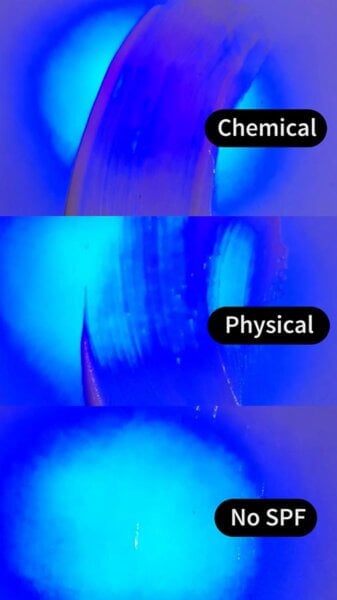
But both types of sunscreens also need about 15 minutes so the sunscreen can spread out evenly on your skin, dry down and form an intact layer. So you can use them the exact same way (unless the sunscreen says it absorbs into skin, like the Evy sunscreen, but that’s a separate issue).
Related post: Do They Work? Evy 6-Hour Sunscreen, Dermablend Drops in SPF (with video)
How long they last on skin
“Because zinc oxide sunscreens are more photostable so you don’t need to reapply.”
Another reason people give for why zinc oxide is better is that it’s photostable, meaning it doesn’t break down in the sun, while chemical sunscreens do.
Some chemical sunscreens can break down after too much UV exposure, and if they break down they don’t work as well. But there are a lot of chemical sunscreen ingredients that are photostable. The newer chemical sunscreen ingredients were specifically designed to be more photostable.
Even the less photostable sunscreen filters can be stabilised by other things in the formula. For example, avobenzone is pretty unstable on its own, but in Neutrogena’s Helioplex formulas, it still gives more than 85% UVA protection after 5 hours of midday sun exposure.
For all sunscreens, chemical and physical, you’re meant to reapply after 2 hours because the sunscreen layer basically starts cracking and wears off on your skin, like how a foundation wears off, so 5 hours from Helioplex should be more than enough.
There are a few studies that checked the photostability of sunscreens – for example, this one looked at how well sunscreens absorbed UV after leaving them in UV for a while. They found that both chemical and physical sunscreens could be photostable.
Why zinc oxide sunscreens may sometimes work worse
There are some reasons why zinc oxide sunscreens can actually be less protective, even with the same SPF:
Reason 1: People are less likely to apply as much
Zinc oxide sunscreens often have a lot of drawbacks that are obvious if you’ve ever tried them.
They can leave a white cast, especially on darker skin – this is when you get this ghostly white look on your face. Sometimes it fades away… but sometimes it doesn’t, and you walk around looking like you’re wearing YouTuber makeup.
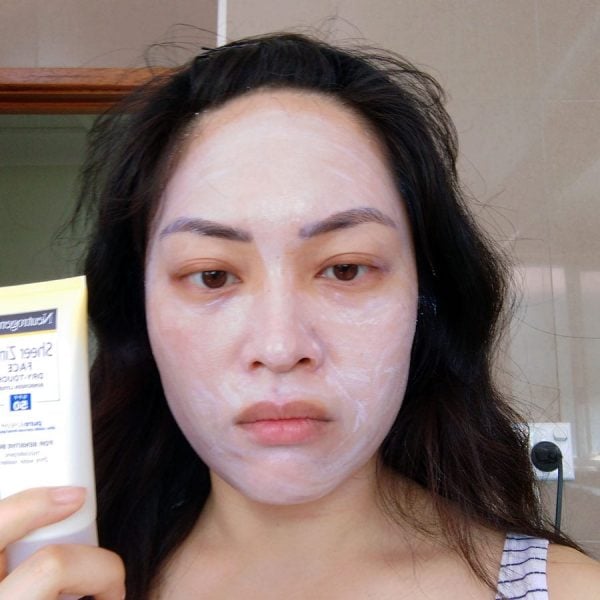
They usually have a pretty thick texture. Zinc oxide is a mineral, which means texture-wise, it’s a bit like ground up rock or dirt. It’s not great at absorbing UV, so sunscreens usually have somewhere close to 10-25% zinc oxide in them. So imagine the limitations on texture if you have a jar of moisturiser, then mix 1 to 2.5 teaspoons of dirt into it.
The base of the sunscreen itself also has to be pretty thick to keep the zinc oxide suspended evenly and not sink to the bottom. So it’s not a great setup for a product that feels nice on your skin, and they also tend to clog up pores as well.
They’re also usually pretty drying – zinc oxide can soak up oil a bit like clay (which can be good for some people, but not great for most).
On the other hand, chemical sunscreens can be made a lot lighter (not necessarily, but it’s a lot more possible), and tend not to have a white cast on darker skin.
Now this might not seem like a big deal, but cosmetic elegance is important. A little doesn’t go a long way with sunscreens. For them to work well, you need to be applying enough, and applying it regularly, and you’re a lot less likely to do that if the product is super white and super thick.
A CeraVe survey found that 55% of people who skipped wearing sunscreen daily said it was because of how it feels during and after application, and 38% said that white cast was an issue.
There’s also a study from a sunscreen ingredient manufacturer (so there’s potential bias, although they make both organic and inorganic sunscreens) that found that people unconsciously used 29% less of a 6% titanium dioxide sunscreen over one that had a mix of 3% titanium dioxide and 3% chemical sunscreen.
You can also see a lot of reviews for mineral sunscreens online where they say things like “it’s thick, but that’s OK because a little goes a long way”, which doesn’t work.
Reason 2: Mineral sunscreens can be pretty unstable
The other big issue with mineral sunscreens that I don’t think we talk enough about is stability. Not photostability, although this comes into play as well, but just regular old stability.
For a sunscreen to work well, the sunscreen ingredients have to be spread out evenly throughout the sunscreen in lots of situations: while it’s in the bottle, while you apply it, and after it’s been sitting on your skin for a while. If it clumps up, you get holes in your protection.
Most chemical sunscreens are soluble, so they stay spread out really well, like vinegar molecules in vinegar. You can leave vinegar for a really long time, and the sourness doesn’t sink to the bottom or anything. That’s because it’s mixed at a molecular level, the individual particles are tiny molecules.
But if you have bigger particles, then it’s a lot harder to keep them apart for longer. Like I’ve said before, you can use a thick texture to try to keep them from clumping together, you can also use rheology modifiers that keep the particles spread out, you can coat the particles.
But at the end of the day, particles are pretty much always going to be harder to stabilise than a solution. This is especially the case when you have zinc oxide and titanium dioxide, which are very dense – 4-6 times denser than water, so gravity pulls them to the bottom. And it’s even worse when you have uncoated zinc oxide, which don’t have coatings that can help keep the particles spread out. A lot of “natural” sunscreen companies use uncoated zinc oxide, because the coatings are usually synthetic (even though zinc oxide itself is pretty synthetic) – these particles want to clump a lot.
Related post: Don’t Get Burnt by DIY Sunscreen
So large particles tend to clump up and separate in the bottle if you leave it for too long, if you let it get too hot, or if you apply it on your skin and let it get wet.
And I think this is the reason why mineral sunscreens, especially those from natural brands that use uncoated zinc oxide in a base that’s largely just mixed oils, don’t get great results in tests like Consumer Reports. In these tests, they measure the SPF after something similar to the standard water resistance test, where they apply the sunscreen, then put the person in water, and re-test the SPF. There are also lots of reviews of these very “natural” uncoated zinc oxide sunscreens where people got burnt while using them – it’s probably a mix of people being more likely to underapply, and the unstable drama queen nature of uncoated zinc oxide.
But I think if you’re aware of these issues and you work around them – make sure you still apply the right amount, don’t leave your sunscreen in hot places, don’t use sunscreen that’s separated – then it’s fine.
Conclusions
So at the end of the day, it’s the same thing I’ve said repeatedly: the best sunscreen is the one that you use. If it’s something you enjoy, fits in your budget, can easily access, doesn’t irritate your skin, then it’s going to be the best sunscreen for you. It doesn’t really matter if it’s physical or chemical .
Also remember: sunscreen is not the be-all and end-all – you can also use other sun protective measures like hats and clothing.
Related post: How to Choose UV Protective Clothing
References
Bernstein EF, Sarkas HW, Boland P, Iron oxides in novel skin care formulations attenuate blue light for enhanced protection against skin damage (open access), J Cosmet Dermatol. 2021, 20, 532-537. DOI: 10.1111/jocd.13803
Gonzalez H, Tarras-Wahlberg N, Strömdahl B, et al., Photostability of commercial sunscreens upon sun exposure and irradiation by ultraviolet lamps (open access), BMC Dermatol. 2007, 7, 1. DOI: 10.1186/1471-5945-7-1
Global Cosmetic Industry, CeraVe Survey Uncovers Reasons Adults Skip Sun Protection, 21 May 2020.
Vollhardt J, Janssen A, Saecker Ch, Modern sunscreens that protect from more than just sunburn, SOFW Journal 2013, 139, 24.


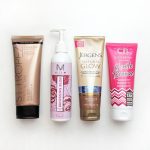


You are my favorite bed time reading, Labmuffin.
Can you comment on nanoparticles? Does the mineral sunscreen as nanoparticles work better? Is there a valid safety concern??
Also what about that study that just came out with benzene in sunscreen? Anything to be concerned about?
https://www.valisure.com/blog/valisure-news/valisure-detects-benzene-in-sunscreen/
Thanks for sharing your wisdom, Labmuffin!
I am a SEO-aware sheep as well when it comes to writing about sunscreens – thank you for yet another round of myth busting!
dear labmuffin thank you for your very informative posts – i follow them closely and am now very well educated on sunscreens. i have been an ardent fan of paula begoun initially as she pioneered calling out the skincare industry for all the bull**it – overpriced products with hyped-up claims. and now many more are following suit – educating the public that good skincare doesnt have to come with a hefty pricetag.
good skincare indeed starts with a good sunscreen ! thanks for all your clear, non biased, honest reviews!
Hi Michelle,
Thanks for your great article as always!
I admit I am pretty biased to Zinc Oxide based sunscreen because my skin likes SkinAqua’s Moisture Milk SPF50+ a lot. Like you said, it controls oily face, and has elegant texture.
So by the way I understand it, it’s bad to mix two SPF50+ sunscreens together? I love both SkinAqua’s Moisture Milk (ZnO2 based) and Tone Up UV (TnO2 based), but Moisture Milk is too thin and Tone Up looks too whitey so sometimes I mix them together on my hand before applying generously. They are on the same brand, both hybrid sunscreens, and don’t have conflicting ingredients, plus the result is great (the texture is just right and the tone up effect is really subtle so it’s not apparent on generous application). But I wonder if it compromises them somehow?
Thank you so much in advance!
Got to know a lot from this!
Everything was so relatable.
Thank you for sharing!
http://trackersbd.com/product/gps-tracker-for-bus/?fbclid=IwAR3RrXWjvWYkL2gr4eE2-Oo7VS6IZuztDhdya0zh2dlNYGtS73pPCFq3fdI
This is an interesting read. However, in keeping with sustainability and climate change, you should know that many ingredients commonly used in chemical sunscreens are damaging to reefs and other marine life. For example, avobenzone and octocrylene are banned from use in Hawaii. The same can be said for other common ingredients in chemical sunscreens.
It is strange that you make no mention of this when talking about chemical sunscreens. You are either naïve, omitting intentionally or just don’t care. I don’t know which is worse.
They aren’t, I’ve talked about it before, and there have been quite a few reviews published in peer-reviewed journals by coral scientists since that confirm what I’ve said here: https://labmuffin.com/is-your-sunscreen-killing-coral-the-science-with-video/
Dr Emily Burns also presented a thorough review of the existing data at the Sunscreen E-Summit: https://www.youtube.com/watch?v=P-ZvEJWcT4c
Would have been nice to also cover the oxidative potential of some of the chemical ingredients, estrogenic effects, and general absorption into the skin and body. Zinc is a basic element, not synthetic.
Talked about it here: https://labmuffin.com/us-sunscreens-arent-safe-in-the-eu-with-video/
Thanks, very interesting article. I have rosacea which is especially triggered by heat, sunlight and stress. My dermatologist recommend zinc based sunscreens a couple of years ago, with the rationale being that they reflect the heat rather than absorb it (which you have debunked) and also that zinc is soothing for rosacea. I’ve tried to find a suitable zinc based sunscreen since then (spending $100s) but even with expensive brands I find they give an unnatural look, sometimes a white cast, sometimes an odd colour from any tint, and by the end of the day they make me look dry, powdery and ghostly. After reading this, I’m going back to my old favourite which is a chemical sunscreen with 3% titanium dioxide. Seems like the perfect compromise.